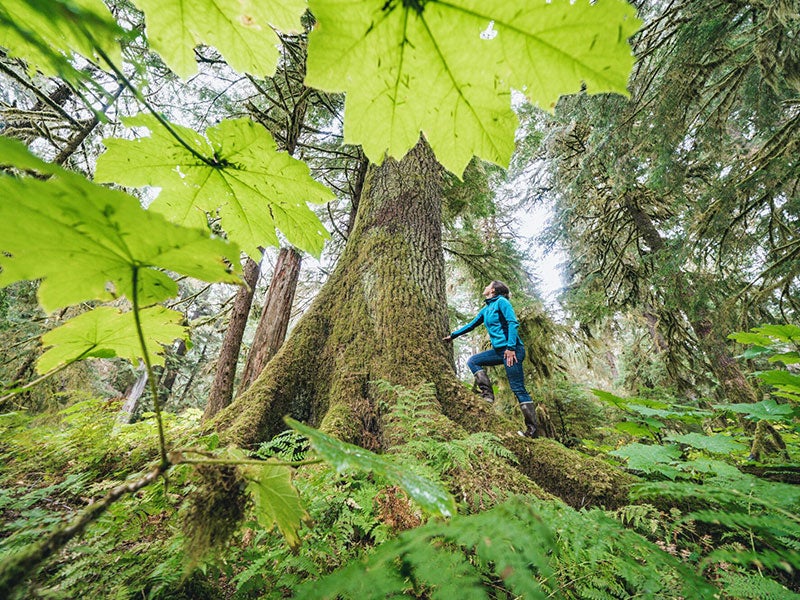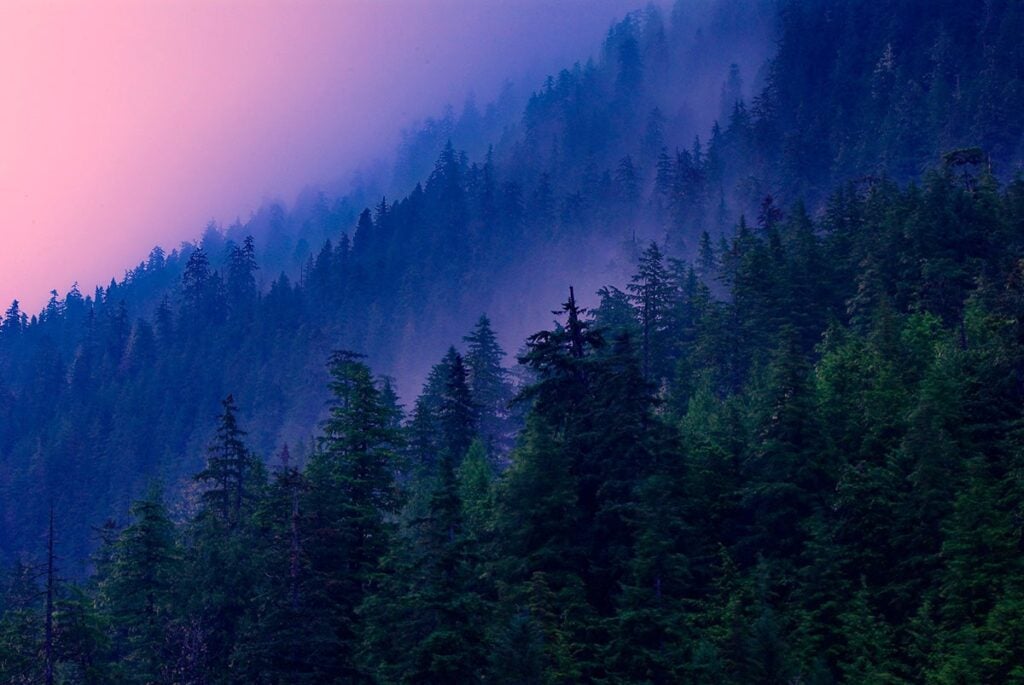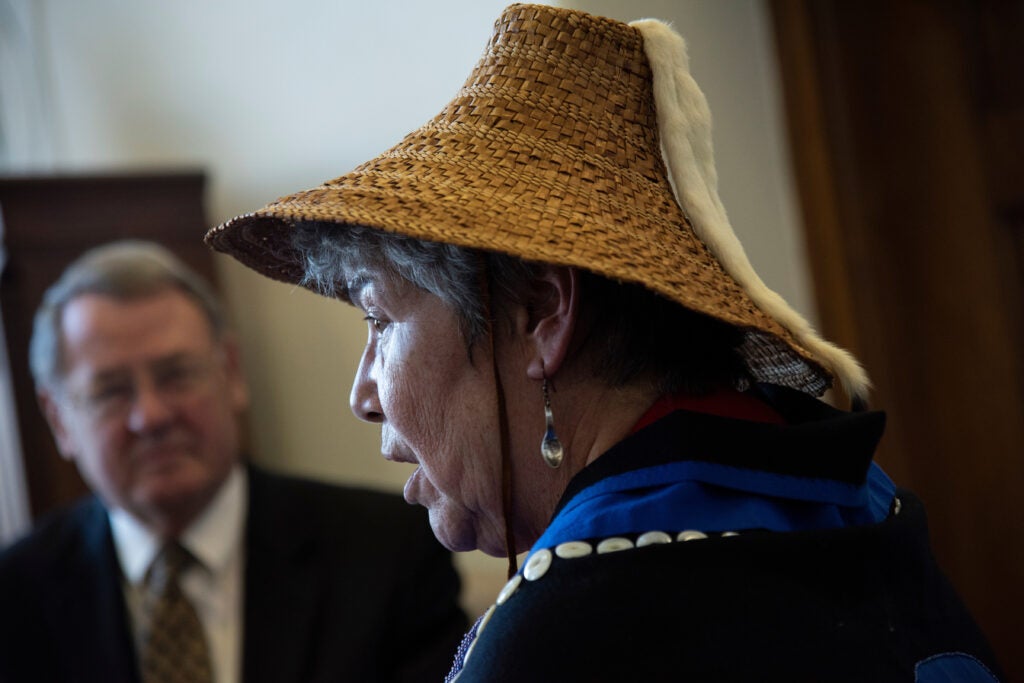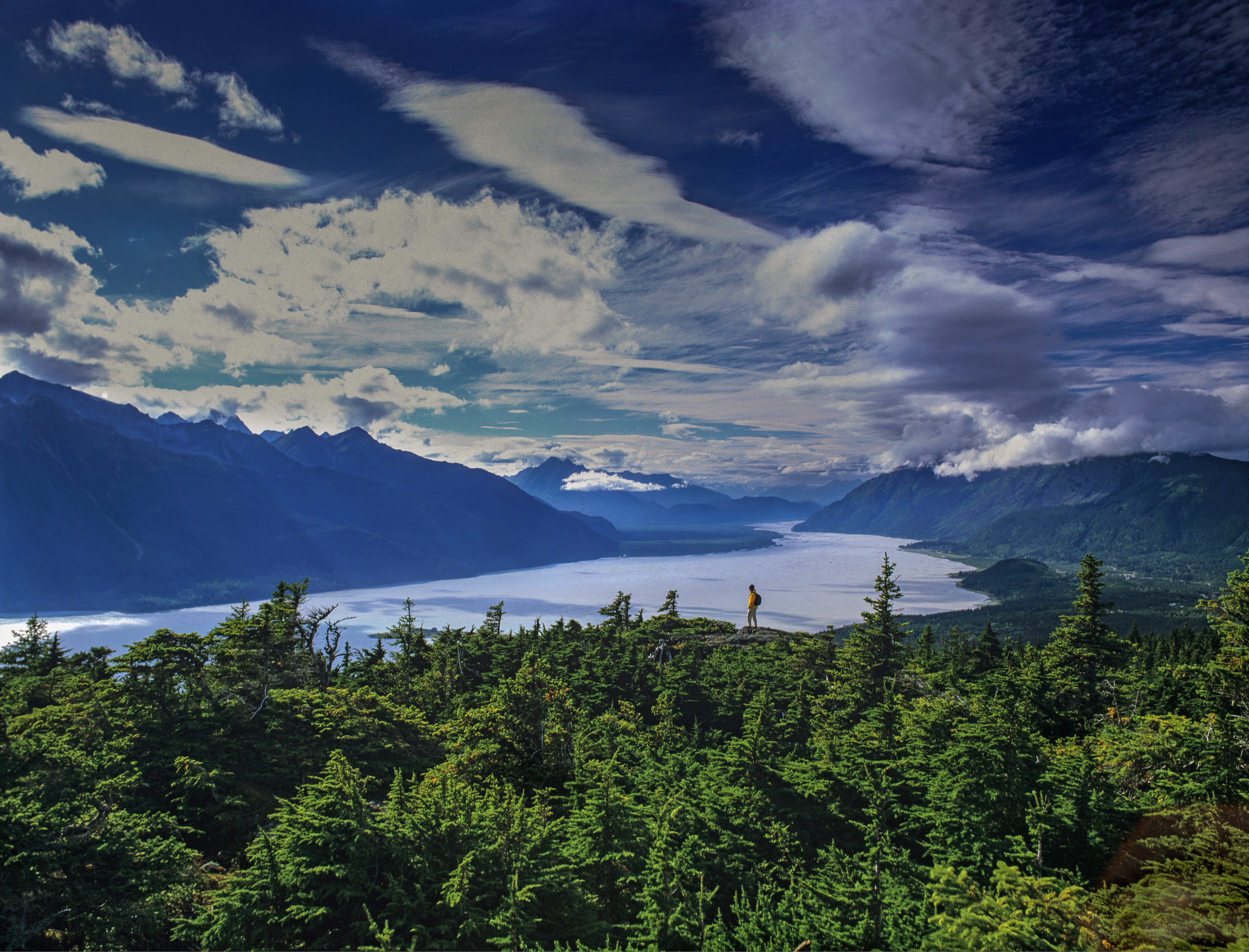Earthjustice stands with western Alaska tribes and families after severe storms devastated entire communities, displacing more than 1,000 residents just before winter. Learn more and how you can help.
Southeast Alaskans Want Sustainable Economies, not Extractive Industry, Within the Tongass National Forest
The Trump administration’s agenda to repeal Roadless Rule protections on the Tongass doesn’t square with a popular vision of sustainable local economies dependent on intact forest ecosystems
In an executive order issued on inauguration day aimed at prioritizing extractive industry above all else in Alaska, the Trump administration made clear its intent to repeal popular protections preventing most logging and roadbuilding within the Tongass National Forest.
When the Roadless Rule was originally adopted in 2001, the Tongass National Forest was included in this significant conservation measure that protects national forests in the U.S. from most logging and roadbuilding. Although both the Trump and George W. Bush administrations exempted the Tongass from the national rule, for the majority of the more than two decades the Roadless Rule has been in effect, it has protected the towering stands of old-growth in the Tongass.
Under Roadless Rule protections, sustainable economies such as tourism and fishing are flourishing in and around the Tongass in Southeast Alaska, while vast tracts of the forest that were previously decimated by large-scale, industrial old-growth logging are slowly healing.
Protecting the intact habitat of the Tongass is something many Americans and Alaskans strongly support and is particularly important to Alaska Native Tribes who have long depended on the Tongass to support their traditional ways of life and keep their cultures alive and flourishing. Politicians, including Alaska’s governor and its congressional delegation who champion rolling back the Roadless Rule, contend the current roadless protections are holding Alaska’s economic growth back. But the data doesn’t support this, and most Alaskans don’t share these views either.
The Roadless Rule helps keep the transition to sustainable, resilient communities moving forward, which is one of the reasons it’s so important to keep it in place and why Earthjustice, along with our co-counsel the Natural Resources Defense Council (NRDC), will keep fighting in court on behalf of our clients to defend it. Earthjustice’s clients are a diverse coalition of Alaska Native, tourism industry, and environmental organizations.
Decades of industrial logging left deep scars on the Tongass — and on the people and communities of Southeast Alaska. Most Southeast Alaskans do not want to return to large-scale old-growth logging. Instead, they vocally support sustainable economic development that protects Indigenous cultures and benefits the region’s key economic drivers — fishing and the visitor and recreation economies.
Protections for the Tongass have strong national support, too. During the previous Trump rollback of Tongass protections in 2020, the public submitted nearly half a million comments. Of those, 96% advocated for keeping Roadless Rule protections in place for the Tongass, and only 1% supported the Trump exemption repealing the Roadless Rule.

In the Tongass National Forest, on Prince of Wales Island, Alaska. (Colin Arisman)
Visitor and seafood industries are the mainstay of Alaska’s resource-based economies
Today, in Southeast Alaska, the timber industry is no longer an economic driver. Far from it. According to a regional economic report, the timber industry makes up only about 4% of Southeast Alaska jobs. The visitor and seafood industries combined make up nearly a quarter of the region’s workforce, with only government providing a similar share of employment. Overall, the report noted the Southeast’s economy in 2024 is “strong and diversified” with tourism and construction showing notable strength, inflation normalized and wages on the rise.
Tongass logging has been highly subsidized, costing the public millions of dollars. As of 2019, the Forest Service had lost more than $600 million over the last 20 years on Tongass timber sales, averaging a loss of $30 million per year. Maintaining the current system of old logging roads within the forest is also expensive, not only in terms of road costs, but also in costs to the region’s prized salmon fisheries. The $5 billion maintenance backlog on the Tongass includes hundreds of blocked culverts that prevent salmon from swimming to their spawning grounds, affecting subsistence, commercial, and recreational fisheries that are crucial to the region. More roads will only result in more costs for maintaining or decommissioning these roads in the future.

Early morning light shines through the clouds in the Tongass National Forest near Ketchikan, Alaska. (Carlos Rojas / Getty Images)
Roads that are needed can still be built under the Roadless Rule
The politicians seeking to repeal Roadless Rule protections on the Tongass like to portray the rule as a complete obstruction to all development. This is simply not accurate. The rule has explicit, built in exceptions that allow development of community infrastructure and mining roads.
First, the Roadless Rule only applies to certain relatively undeveloped areas of the forest, known as inventoried roadless areas, with the goal of preserving the ecological integrity of those lands. For the Tongass, the Roadless Rule bans most roadbuilding and logging on 9 million acres across the 17-million-acre forest, the traditional territory of the Tlingit, Haida, and Tsimshian peoples, the original inhabitants of the land.
Earthjustice’s partners who have spent decades defending the rule say it’s functioned well to protect people, fish, wildlife, and traditional ways of life while allowing sustainable local businesses, including commercial fishing and tourism, to thrive. And when work needs to be done in the forest, the Roadless Rule allows essential development to happen.
Development allowed under the Roadless Rule includes construction and maintenance of utility lines, hydropower facilities, mining roads for locatable minerals (i.e., hardrock mines), some federal-aid highways, and roads to access private lands.
Since the Forest Service Alaska Region began documenting and tracking certain decisions for projects within roadless areas in 2009, the Tongass has received 59 project proposals for projects in the inventoried roadless areas that included tree removal and/or road construction using the exceptions authorized by the 2001 Roadless Rule, including for mineral, energy, recreation, and transportation projects. All 59 projects were approved, according to the Forest Service.

Tlingit tribal member Wanda Culp traveled to Washington to ask government officials to protect her home, Alaska’s Tongass National Forest. (Melissa Lyttle for Earthjustice)
North America’s Amazon
What’s more, the value of the Tongass as a carbon sink is becoming increasingly critical. The Tongass, with the most old-growth trees of any national forest, currently holds 20% of the carbon stored by all national forests in the country. This is 3.1 billion tons of carbon, equal to 1.5 times the United States’ total greenhouse gas emissions for 2019.
When forests are logged, the carbon that has been stored in the trees and in the soil is released into the atmosphere again.
Beyond all that, keeping the wildest parts of the Tongass National Forest safeguarded from reckless development under the Roadless Rule protects salmon, Indigenous communities who depend on the forest for subsistence and their traditional ways of life, and clean drinking water.
Reversing the Roadless Rule on the Tongass risks dragging us back to the destructive days of clearcut logging and other industrial development, and it’s simply not what most Alaskans want right now. Let’s keep moving forward, and to do that, we may need to fight to keep what we have.
Opened in 1978, our Alaska regional office works to safeguard public lands, waters, and wildlife from destructive oil and gas drilling, mining, and logging, and to protect the region's marine and coastal ecosystems.
